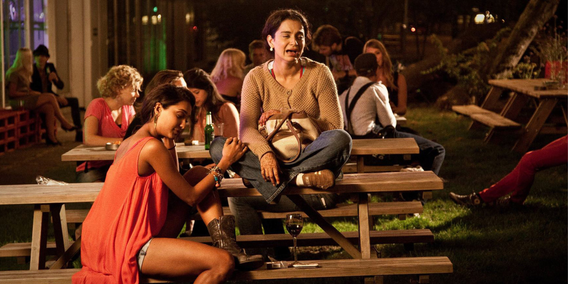Throughout the COVID-19 crisis, most of us have adapted to new and unprecedented scenarios. We went from socializing, working and eating in three different places to doing all of them in one, and sometimes, doing them simultaneously. Over the past two and a half years, multitasking has become an important skill to acquire. Adults have to cook meals and work at the same time, parents have to pay equal attention to office projects and school assignments, children have to study and not balk under pressure. While this in itself is praiseworthy, some of us are also taking it a step further, we are trying to change bad habits – could be our own, our pets, our partners or even our child’s habits!
Every time we reminisce about our childhood, we end up talking about punishments. Sometimes, it’s silly like duck walks, frog jumps, or a hundred squats, but a lot of times, these acts of punishment are inching towards physical violence. Physical or verbal acts of violence lead to a variety of new problems, starting with seriously injuring a loved one to causing trauma in their lives. What’s more? We’re teaching them it’s okay to physically hurt other people!
We can understand social learning through the Bobo Doll Experiment by Albert Bandura. The study demonstrated how children as young as three years of age could learn violence and aggression through observation – be it through real situations, movies or games (Bandura, 1961). That being the case, if we continue reciprocating to negative behaviour with violence, there’s a high chance that we, as models, are teaching them to do the same thing.
With experience, we have always perceived punishment negatively, only because it’s been reinforced with roughness or abuse in our society. But in behavioural terms, punishment means the reduction of target (particular) behaviour. Miltenberger gave us two types of punishments: positive – where we add something undesirable after bad behaviour occurs, and negative – where we remove something desirable after the activity occurs. (Miltenberger, 2016) In a school, positive punishment is often always a beating – instead the child could be given a time-out or extra homework. At home, they could be told to do an activity which they perceive as undesirable (cleaning up their toys, etc.) For pets, negative punishment could involve not playing with them or not giving them their favourite treats every time they misbehave. Even though these punishments do not involve any abuse, they are not always deemed effective. A lot of the time, the maladaptive behaviour is only suppressed and may return with time. Punishment specifically tells the child what not to do. Therefore, the importance of telling them what to do and praising them comes to the forefront.
It is important for us to unlearn certain preconceived notions in order to help future generations learn better. If you have been trying to punish someone for bad behaviour, or are helping them modify it, here are behavioural techniques you could use instead of (or alongside) positive and negative punishments.
Experiments done by B.F. Skinner on Operant Conditioning said that in order to put a stop to certain behaviours, it is beneficial to ignore them i.e. to not reinforce them in any way. He called the technique “extinction”. (Skinner, 1963) This means that in order to make your child throw less tantrums, ignoring the tantrums would be a good start. The tantrums may increase for a while and you might have to exert maximum self-control to not act on them, but once you stop reinforcing (or reacting to) those behaviours, the behaviour will slowly diminish.
But there’s a problem with only employing extinction to improve behaviour. An aggressive child may continue being aggressive even after being ignored for a long time. Daniel G. Amen, in his book, “Change Your Brain, Change Your Life”, wrote that he once took his son to an aquarium and met a very-well behaved penguin called Fat Freddie. In awe of Freddie’s behaviour, Amen asked his caregiver how she trained her pet, and what the caretaker said became Amen’s life lesson. She said, “Unlike parents, whenever Freddie does anything like what I want him to do, I notice him! I give him a hug, and I give him a fish.” (Amen, 2015)
Here’s an extra takeaway: apart from modifying behaviours, here’s another thing this teaches you: Looking at the good things around us and praising them might do us more good than being disheartened looking at the bad.
So, what does this mean?
Skinner’s research also shows that if we react to positive behaviour and reward it with praise or gifts, the behaviour will continue. He calls this positive reinforcement. So the next time your pet does something they are forbidden to do, don’t react to it. However, the next time you see your pet behaving well, praise them, give them a treat and a hug. Reinforcing adaptive behaviour would mean more of it in the future. Using positive or negative punishment with positive reinforcement would ensure that even though the bad behaviour is criticised, the good behaviour is praised. This will allow them to comprehend good behaviour while curbing the bad.
Behaviour modification techniques have always been very important in counseling. However, it is important to remember that behaviour stems from thought processes and if these bad habits begin to multiply or lead to grave problems in the environment, a mental health professional should be contacted for further help.
References:
Amen, D. G. (2015). Change your brain, Change your life (2nd ed.). New York: Harmony Books
Bandura, A., Ross, D., & Ross, S. A. (1961). Transmission of aggression through imitation of aggressive models. The Journal of Abnormal and Social Psychology, 63(3), 575–582. https://doi.org/10.1037/h0045925
Corey, G., Bawa, U., & Nicholas, L. J. (2017). Theory and practice of counselling and psychotherapy. South Africa: Cengage Learning.
Miltenberger, R. G. (2016). Behavior modification: Principles and procedures (6th ed.). Cengage Learning.
Skinner, B. F. (1963). Operant behavior. American Psychologist, 18(8), 503–515. https://doi.org/10.1037/h0045185








